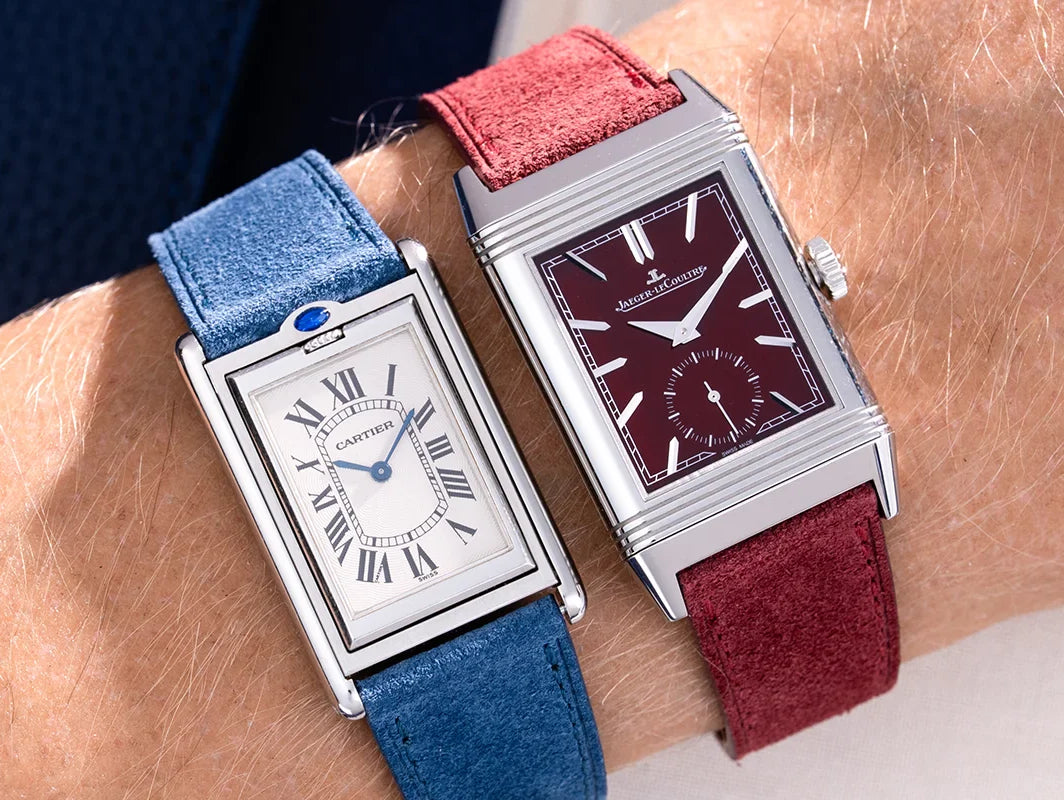What happens when a watch brand is born in the shadow of a giant – and then chooses to carve out a legacy of its own? The story of Tudor is one of precision, rebellion, and quiet confidence.
Who Owns Tudor Watches?
To understand the story of Tudor, we need to begin with a name that resonates across horological history: Hans Wilsdorf, the founder of Rolex. In 1926, Wilsdorf registered the trademark "The Tudor" with the vision of offering watches that would uphold Rolex’s standards of quality and dependability – but at a more accessible price point.
In his own words, Wilsdorf wanted to create “a watch that our agents could sell at a more modest price than our Rolex watches, and yet one that could attain standards of dependability.”
So yes, Tudor is owned by Rolex, or more precisely, by the Hans Wilsdorf Foundation, the same trust that owns Rolex. But from the very beginning, Tudor was never meant to be a “budget Rolex” – it was designed to be a different kind of watch for a different kind of customer.
Tudor Watches History: Origins from 1926 to 1949
The first Tudor watches began appearing in the 1930s. Early models carried the simple Tudor name on the dial, often in elegant cursive script. These watches were smaller, more affordable, and aimed at a wider audience than Rolex’s more exclusive offerings.
By 1946, the brand had grown to the point where Montres Tudor S.A. was officially established. Rolex continued to support Tudor with robust cases, crowns, and quality control, while using third-party Swiss movements to keep costs down.
The brand’s identity started to take shape, with its logo evolving from the Tudor rose to a shield, symbolizing strength and reliability. The transformation was more than visual – it reflected the brand's growing confidence.
Military-Grade Performance
Tudor earned its stripes not in a boardroom, but in the field.
In the 1950s, the French Navy (Marine Nationale) adopted Tudor watches as official equipment for their divers. Tudor’s rugged Submariner models, launched in 1954, quickly gained a reputation for withstanding extreme underwater conditions.
These watches weren’t luxury pieces tucked away in collectors' safes – they were tools for soldiers, divers, and adventurers. The North Greenland Expedition in the 1950s relied on Tudors for their harsh Arctic missions. In short, Tudor was built to be used.
The Rise of Icons
Tudor’s historical catalog is filled with references that collectors admire today:
Tudor Submariner 7922 (1954): their first diving watch
Tudor “Monte Carlo” Chronographs (1970s): known for their bold, colorful dials
Tudor Prince Date+Day : a classic with day and date complications
Though inspired by Rolex’s technical standards, these watches began to take on a life of their own. The designs grew bolder, the cases chunkier, the colors more playful. Tudor was learning to speak with its own voice.
The Comeback Era
After a quieter period in the '80s and '90s, Tudor roared back to life in the 2010s.
With the launch of the Heritage Black Bay and Pelagos, Tudor rediscovered its vintage soul – and reinvented it with modern materials and movements. These watches paid tribute to the past without feeling stuck in it. They were bold, robust, and ready to be worn.
In-house movements followed, proving that Tudor was no longer dependent on third-party calibers. Today, models like the Black Bay 58, Pelagos FXD, and the Chrono continue to build on Tudor's tool-watch heritage.
Tudor also stepped into the world of motorsport and adventure, partnering with ambassadors like David Beckham, Jay Chou, and the Alinghi Red Bull Racing team. The message was clear: Tudor is not your granddad’s Rolex alternative. It’s a brand made for bold moves.
More Than a “Little Rolex”
Tudor has long carried the label of “Rolex’s little brother.” But in truth, Tudor is a watch brand that chose to walk its own path.
Instead of chasing luxury, it chased reliability. Instead of marketing polish, it earned its place through performance. While Rolex conquered the spotlight, Tudor built quietly – and today, stands proud as one of the most respected tool-watch makers in the world.
Tudor in the Real World: A Watch for the Bold
While Tudor’s heritage is deeply rooted in military operations and icy expeditions, its appeal has always extended far beyond the rugged and adventurous.
You’ll find Tudor on the wrists of creative professionals, entrepreneurs, and independent thinkers — people who choose their timepieces not for status, but for meaning. Tudor isn’t about showing off; it’s about showing up — with character, resilience, and purpose.
There’s something undeniably cool about wearing a Tudor. It says you know your watches. That you respect heritage. That you value craftsmanship. And that you don’t need to follow the crowd to know you’ve made a good choice.
What It Means to Wear a Tudor Today
Wearing a Tudor isn’t about making a statement to others – it’s about making a statement to yourself. It’s a nod to purposeful design, to heritage without pretense, and to watches that are meant to be worn, not just admired.
Modern Tudor owners are often those who know their watches. They value craftsmanship and functionality, but don’t need the validation of a crown logo. They choose Tudor not because it’s a "budget Rolex," but because it’s a brand with its own soul – one forged in icy expeditions, military operations, and decades of quiet innovation.
Choosing Tudor means choosing history, rugged charm, and a legacy that lives on your wrist.
Lorem ipsum dolor sit amet consectetur adipisicing elit. Illum neque eaque, autem sit soluta, voluptatum libero magnam tempore ullam at harum vel, ad reprehenderit, nemo veniam quas in voluptas hic. Lorem ipsum dolor, sit amet consectetur adipisicing elit. Natus id officia omnis suscipit aut architecto repellat a quia eaque reiciendis blanditiis perferendis hic, nihil, mollitia. Iste velit aperiam, numquam dolorem.
Looking to give your Tudor a fresh new look?
Explore our collection of rubber straps for Tudor watches.



